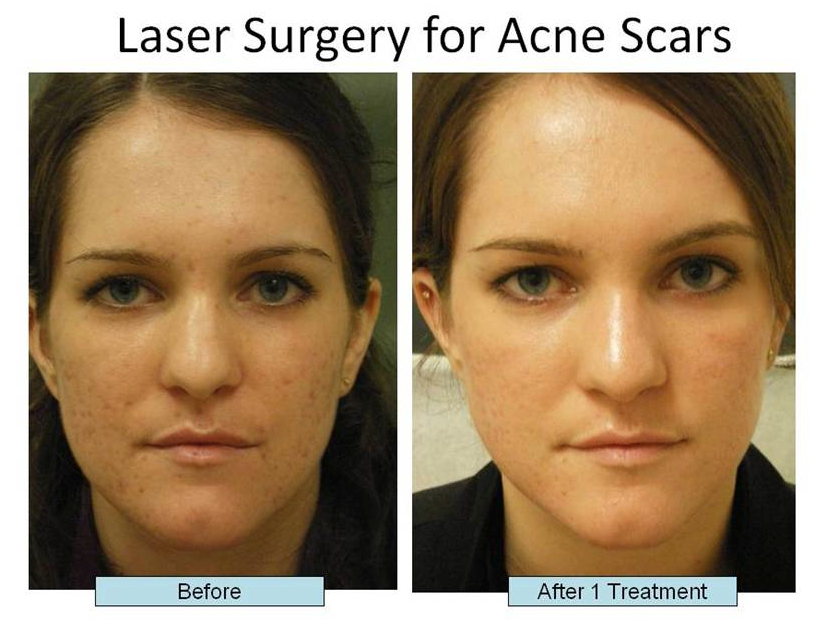Targeted Acne Scars Treatment: Achieve Smooth, Even Complexion
Targeted Acne Scars Treatment: Achieve Smooth, Even Complexion
Blog Article
Recognizing the Different Skin Problem and Effective Treatment Options for Acne Scars
Acne scars stand for a complex interplay of skin conditions that substantially effect people' self-worth and general skin health. As we explore the landscape of acne scar management, it comes to be apparent that the trip towards more clear skin might involve more than simply topical solutions.
Types of Acne Marks

On the other hand, hypertrophic marks arise from an overproduction of collagen during the recovery procedure, leading to elevated areas on the skin. These marks are typically strong and can vary in shade, sometimes appearing red or darker than the bordering skin.
Understanding these sorts of acne marks is important for creating an effective treatment strategy - acne and acne scars treatment. Choices might include chemical peels, laser therapy, microneedling, or dermal fillers, tailored to the specific scar kind. A complete assessment with a skin specialist can assist determine one of the most proper treatment, thinking about the person's skin kind, mark severity, and overall skin health and wellness
Reasons For Acne Scarring
Marking takes place as a result of the body's natural healing action to swelling and injury triggered by acne sores. When acne kinds, it triggers an inflammatory action, resulting in the launch of numerous cytokines and development variables that advertise healing. However, this process can in some cases result in extreme tissue formation or poor repair, resulting in scars.
The primary causes of acne scarring consist of the severity of the acne itself, period of the sores, and private skin kinds. Extreme inflammatory acne, such as nodules and cysts, is most likely to cause scarring as a result of much deeper tissue damage. In addition, incorrect handling of acne lesions, such as pressing or picking, can exacerbate cells injury and swelling, raising the chance of scarring.
Hereditary tendency also plays a considerable duty; people with a household history of scarring go to a higher risk. Furthermore, skin kind and shade can influence mark formation, as darker skin tones may experience post-inflammatory hyperpigmentation, while lighter skin might establish atrophic scars.
Eventually, comprehending these causes is important in taking care of acne and mitigating the capacity for scarring.

Therapy Choices for Scarring
Effective therapy choices for acne scarring vary depending on the type and extent of the marks. Typically categorized into atrophic, hypertrophic, and keloid marks, these problems need customized approaches for ideal outcomes.
For atrophic scars, which are identified by a loss of tissue, treatments such as chemical peels, microdermabrasion, and laser treatment are commonly utilized. These methods advertise skin renewal and boost collagen production, consequently improving skin texture. Subcision, a minimally intrusive procedure, can likewise be effective by separating fibrous bands beneath the skin.
Keloid and hypertrophic scars can be extra challenging to deal with. Choices include corticosteroid review shots to decrease swelling and flatten the marks. Sometimes, cryotherapy or laser treatment may be recommended to lessen their look.
Surgical choices are available for serious scarring, where excision or skin grafting may be needed. It's essential for people to seek advice from with a skin specialist to evaluate their details scar kind and review the most appropriate therapy plan. Integrating numerous therapies typically produces the most effective outcomes, making certain that each patient's special skin problem is attended to properly.
Natural Remedy and Natural Solutions
Natural options and natural home remedy can provide an easily accessible approach for individuals seeking to enhance the look of acne scars (acne and acne scars treatment). Numerous active ingredients found in the home kitchen have actually demonstrated possible advantages in boosting skin appearance and promoting recovery

Another efficient alternative is lemon juice, which works as an all-natural exfoliant and can lighten hyperpigmentation. Nonetheless, it needs to be utilized cautiously, as it may trigger photosensitivity. Oat meal masks are likewise valuable; their mild exfoliation can assist eliminate dead skin cells while calming irritability.
Necessary oils, such as tea tree oil and lavender oil, can even more sustain mark recovery as a result of their antimicrobial homes. It is vital to do a spot test prior to applying any solution to guarantee there are no damaging responses. These natural services can be a complementary approach in the journey to decrease see this site acne scars.
Avoiding Future Scarring
Taking on an aggressive approach to skin care can significantly decrease the risk of establishing future acne scars. One of the key approaches is to manage acne successfully as it occurs. This includes using non-comedogenic skincare products and medications prescribed by skin doctors that target acne without irritating the skin. Normal cleansing, exfoliation, and hydration can help preserve skin wellness and stop clogged pores.
Additionally, avoiding the lure to select or press acne lesions is important, as this can cause swelling and subsequent scarring. Instead, individuals need to concentrate on applying topical treatments that promote recovery and minimize swelling. Active ingredients such as salicylic acid, benzoyl peroxide, and retinoids are known for their efficiency in managing acne and reducing marks.
Sunlight defense is one more crucial part; direct exposure to UV rays can hamper and darken marks recovery. Using a broad-spectrum sunscreen daily can alleviate these results.
Lastly, preserving a healthy diet regimen abundant in antioxidants and remaining hydrated assistances skin regeneration. By applying these preventive steps, individuals can considerably reduce their risk of future scarring and advertise total skin health and wellness.
Final Thought
To conclude, a thorough understanding of acne marks, encompassing both atrophic and hypertrophic types, is essential for efficient therapy strategies. Customized treatments, including specialist treatments and natural remedy, can considerably improve skin look and structure. Safety nets likewise play a vital function in decreasing future scarring. Appointment with a skin specialist stays vital to create tailored strategies that take into consideration individual skin kinds and scar extent, inevitably boosting the efficiency of mark management methods.
Acne scars stand website here for a complicated interaction of skin conditions that considerably influence people' self-esteem and general skin wellness. The two key classifications of acne marks are atrophic and hypertrophic marks. These marks are more identified right into 3 subtypes: ice pick scars, which are deep and narrow; boxcar scars, which are broader and have well-defined edges; and rolling scars, which develop a wave-like look due to irregular skin appearance.
A detailed examination with a dermatologist can help establish the most appropriate intervention, taking into account the individual's skin kind, scar intensity, and general skin health.
Examination with a skin doctor continues to be important to design tailored strategies that consider private skin kinds and scar intensity, inevitably enhancing the efficiency of scar management strategies.
Report this page